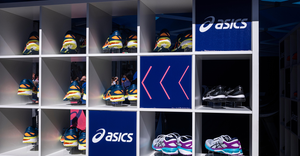Midland, Mich.-based Dow has developed new technology to produce polyethylene-based (PE) stand up pouches that will make MRF’s jobs easier while addressing a long-standing manufacturing dilemma: figuring out how to engineer packaging to keep food fresh without leaving a heavy carbon footprint. Historically, the better the barrier, the harder it’s been to break down later.
This newest family member of Dow’s RecycleReady technology will enable throwaway pouches containing dried foods like granola and nuts to enter PE recycle streams. Dow claims it is the first package of its kind with barrier film that can enter these streams.
The company’s brainchild, created through collaboration with the Sustainable Packaging Coalition (SPC) and sold to converters who help brands create their packaging, will benefit more than MRFs, claims Dow. Municipalities will have a way to deal with the rapidly stockpiling pouches while consumers can play their role as good stewards without giving up convenience.
The problem with earlier products has been that creating highly efficient protective barriers required adding multiple materials, including ethylene vinyl alcohol (EVOH) to packaging, which cannot be easily separated or processed. Figuring out how to do it required a lot of guesswork of MRFs as no two products are engineered exactly the same.
Dow’s answer, introduced in this new pouch, is RETAIN polymer modifiers, an advanced barrier compatibilizer. Barrier packages with EVOH can be constructed with RETAIN in the layers, enabling them to be added to the flexible PE recycling stream.
The new pouch comes with other environmental benefits. It requires 88 percent less total material weight, consumes 54 percent less energy and generates 90 percent less postconsumer solid waste compared to a bag-in-box cake mix format with equivalent contents, says Stacy Fields North American director of packaging solutions for Dow Packaging and Specialty Plastics.
Dow does not say when the newest product, currently in trials, will roll out but reports it has been vetted on its own equipment and validated through industry partners that participate in recycling programs.
The collections infrastructure is there
About 18,000 grocery store drop-off programs are ready to receive the pouches. They will be tossed in with grocery bags, packing films used in transportation and other flexible film products they already collect. The infrastructure is not new; as early as 2012, 74 percent of the U.S. population had access to plastic collections programs, according to a Moore Recycling Associates report. The collection points keep expanding as the technology slowly catches up.
Others will benefit too, claims Dow.
“As part of Dow’s 2025 sustainability goal to advance a circular economy, we are helping brand owners meet their own sustainability goals. Converters will be able to develop packages produced with barrier film that can be added to collection for PE recycling streams,” says Fields. He adds that municipalities will be able to divert packaging from landfill or incineration, increase post-consumer recycling yields and cut food waste associated with growing, processing and shipping food that is thrown away.
The pouches will carry the How2Recycle Store Drop-Off label, created by the SPC informing consumers of where and how to recycle them.
The American Chemistry Council (ACC), who is working to double PE film recycling by 2020, is ready to see the pouches roll out.
“Flexible packaging is generally extremely lightweight and efficient to begin with. The ability to recycle this efficient packaging takes these environmental benefits even further,” says Steve Russell, ACC’s vice president of Plastics.
RecycleReady’s evolution
Dow has been working on RecycleReady technology for some time, and last year launched the first product leveraging it, a recyclable dishwasher pod for Vermont-based Seventh Generation. The manufacturer worked with Dow’s Packaging and Specialty Plastics Group and converter Accredo Packaging to create the pouch.
Since then, says Fields, “Dow has continued to refine the technology, which has led to better barrier, better stiffness and higher temperature tolerances for PE packaging to accommodate more end-use applications.”
About the Author(s)
You May Also Like




